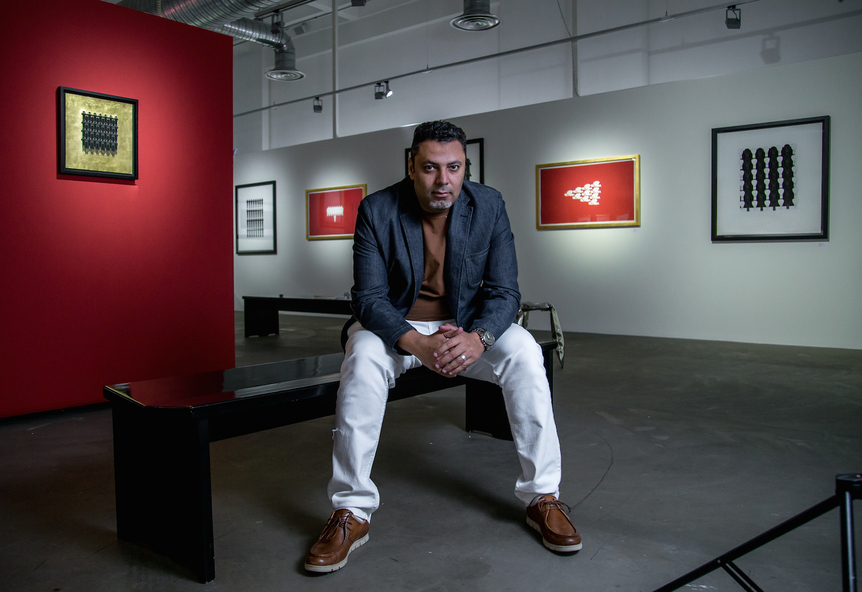
R
E
V N
E
X
T
Saudi Arabia: the enigmatic nation whose norm is always met with incredulous looks. There are family sections in restaurants where single men aren’t allowed to enter. Everyone has apps downloaded onto their smartphones that alert them when it is time for the five daily prayers (according to Muslim customs), as the entire country temporarily shuts down in observance of the ritual. And, yes, the abayas (a robe-like over-garment) is mandatory for women to wear in their everyday life.
In contrast to Jeddah, the urban and resort center of Saudi Arabia, Riyadh—the nation’s capital—is known as a notoriously conservative city. Landlocked and sitting atop a large plateau, Riyadh is the country’s largest city, and the epicenter of the Saudi royal family. An increasingly sprawling metropolis, the combination of Riyadh’s grid plan and chaotic traffic ensures that jams, gridlock and terrible parking are all mainstays of the city. The Olaya district—home to ’the iconic Kingdom Tower and Al Faisaliyah Tower and numerous shopping malls—is the commercial hub of Riyadh. The district is also the site of one of Riyadh’s weekend rituals, where young men infamously cruise up and down the high-end Tahlia Street. At the center of Riyadh lies Batha’a and Dirah, the oldest quarters of the city.
Despite Riyadh’s inherent conservatism, its art scene has developed exponentially over the past five years—a growth spurred on by both the region’s flourishing art market and an increased local interest in the arts. A number of galleries and art spaces have opened, which host both regional and international artists. Regularly scheduled exhibitions at such galleries are now a staple of the city’s art scene. Lam Art Gallery, Naila Art Gallery (Full disclosure: this writer currently works for Naila Art Gallery), L’Art Pur and Lahd Gallery all have active programs.
Areej Café and Alāan Artspace both work as multi-functional art spaces and exhibit artwork on a regular basis, but each also operate a restaurant and shop component. Elsewhere in Riyadh, there are also concept stores—such as Maison BO-M and Gallery Design—which exhibit art and design pieces as well as host pop-up shops.
Apart from galleries and alternative spaces, artists’ communities and groups are on the rise, leading different initiatives to further develop the cultural and public life in the city. The following are some of the emerging art initiatives in Riyadh.
Areej Art Café
Areej Art Café is in the Centria Mall on the corner of Olaya and Tahlia street. The Areej Art Café is a welcoming space for creative individuals (and offers a unique menu of extravagant pastries and homemade ice-cream). Each month, the walls of the café are decorated with new work by Saudi-based artists. In November 2014, the Art Café featured mixed-media artist Ayman Zedani, who had his first solo exhibition at Naila Art Gallery earlier in the year.
Alāan Artspace
Alāan Artspace is run by Riyadh-based gallerist Neama al-Sudairi, who has dedicated her gallery to supporting the local art community, especially in exhibiting artists living in the capital. The gallery plays an active role in nurturing the emerging Saudi art scene. In the fall of 2014, Alāan Artspace exhibited the graphic illustrations of Saudi-based Egyptian artist Ehab Mamdouh. The show’s title, “Muqeem,” translates to “stillness” in Arabic, and the concept of the exhibited works centered on the need to “press pause” on the chaos and conflict that is plaguing the world—appealing to both religious and secular viewers.
Alāan Artspace also houses a library dedicated to art books. It aims to fill the void in the country’s art resources and provide much needed references for those interested in pursuing the creative fields.



